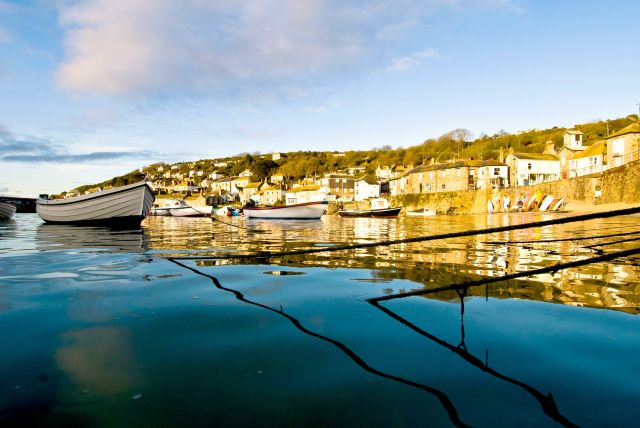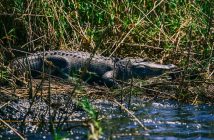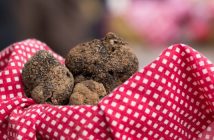“I don’t need to check your tickets, do I?” the inspector beams, before guffawing, as he enters the swanky Pullman Dining Carriage, assuming that we are to be trusted, as patrons of the newly revamped onboard restaurant, rather than punters of the stale sandwich buffet car.
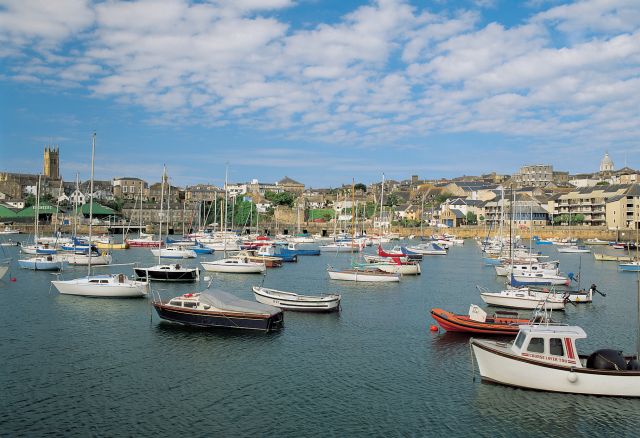
We being me and a table of three I’d just been forced to gatecrash; as the only solo diner, and no solo dining options available in the fully packed carriage, this is the only seat left in the house. A little flustered from the thought of imminent small talk with strangers, coupled with the frantic commute from the office to catch the 18:10, I go straight for a medicinal gin and tonic. As the train pulls out of Paddington and I sip the citrus deliciousness of my icy beverage, a silent ‘ahhhh’ omits and I slip into sociable mode as effortlessly as I’d found comfort in the sprung cushioned seat and white cotton-clothed table, laid up ready for the three course, silver service affair we’re about to embark on.
It can’t be easy spooning slippery dauphinoise potatoes onto plates in a swaying carriage, yet our waitress pulls it off perfectly with the steadiness of a bomb diffuser; and again, when she silver serves my delicate and deliciously buttery Dover sole. I don’t envy the chef having to cook up this faultless feast in a train kitchen either. This new partnership with chef and restaurateur, Mitch Tonks, which champions ingredients from the South West and Wales, such as the Devon crab we kicked off with, is a triumph, on a par with the quality and comfort I once experienced on the Orient Express. A fabulous start to my weekend.
After a treacle tart and clotted cream, I politely excuse myself from the table and take up residence in the next carriage for the remainder of the long journey to Penzance. Plans to make wise use of the five and a half hour trip by doing work are squandered by my yawn-inducing, full stomach and the magnetic views that keep drawing my gaze: cow-filled green pastures, chalk silhouettes in steep hillsides, colourful fishing boats, waters tinted with the changing sunset; yellows, through oranges to violet, powdery pink, then cornflower blue, to darkness; skies worth capturing in gouache. Scenes that made one ponderant.
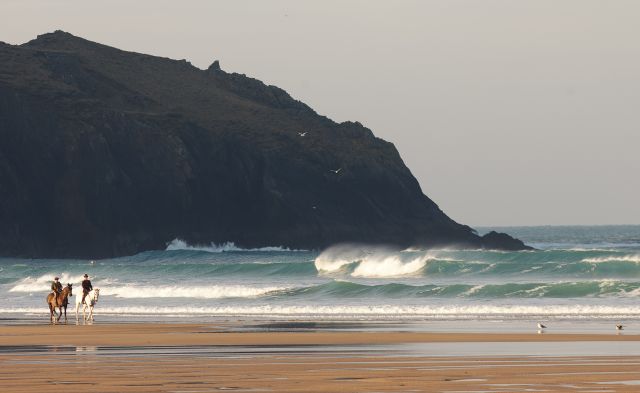
Credit: www.art-photographers.co.uk
A perfect setting and mindset for the tale I am heading to West Cornwall to immerse myself in over the next two days: Summer in February, a film recently shot in the county, adapted from Jonathan Smith’s 1996 novel of the same name. Set in late 19th and early 20th century Newlyn, a fishing village just outside Penzance, which caught the attention of artists who started settling there; largely thanks to artist Stanhope Forbes, who founded the Forbes School of Painting there in 1899. Art students from London and other parts of England flocked there to learn from him and discover for themselves the brilliant light and variety of natural subjects the untouched area boasted, perfect for the en plein air (‘in the open air’) approach popular at the time. Then, after another championed artist, Samuel Birch, relocated three miles up the lane to Lamorna for more aesthetic scenery still, a handful of artists followed. Thus the Lamorna Artists Group was born, a bohemian colony boasting future members of the Royal Academy of Arts, including Harold and Laura Knight, and Alfred ‘AJ’ Munnings. These as well as land agent at the time Gilbert Evans and budding young artist Florence ‘Blote’ Carter-Wood are the central subjects of the novel.
The film caught my attention first, with its promise of Cornish scenes I’d recognise from an early childhood and later, teenage years, spent there. After watching it, I was captured by the true story it was based on, which picks up when the group is at its happiest and centres largely on the love triangle between Alfred, Gilbert and Florence. I was setting off to follow in the same paths of its protagonists, but rather than embroil myself in a love triangle, I was keen to see the places they painted, walk the paths they tread, and experience, a little, the life of a Lamorna artist.
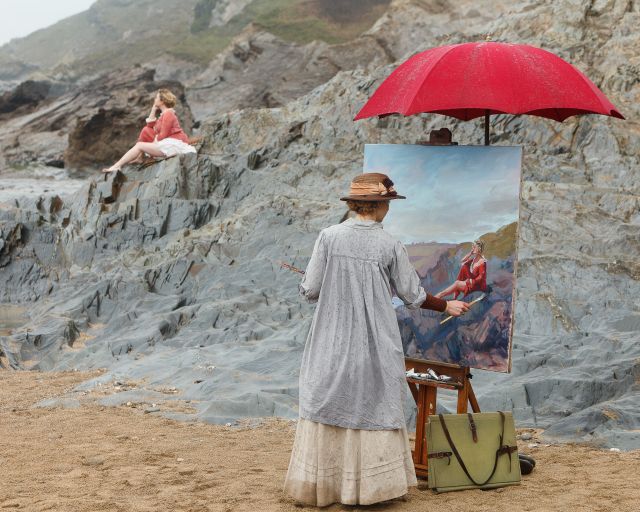
Credit www.art-photographers.co.uk
The film, being set through the winter months and shot – not in Lamorna, but in various locations, including Hollywell Bay, Porthcurno and Cape Cornwall – shows the county at its rainy, blustering best; the rugged granite cliffs and thrashing waves made for those conditions, tackling them with nothing short of beauty. It is a summery June day when this train journey takes place, so I’m expecting a weekend of clear skies, sun, and seagulls at their most exuberant.
I finally pull into Penzance at around midnight, a taxi with my name on it ready to take me to The Cove, my base for the next two days. It’s silent and pitch black when I arrive, which with the curtains fully open and wall to wall, floor to ceiling glass, is quite daunting. Not knowing what my room looks out to or who, for that matter, looks in, I swiftly draw them shut and head straight in the direction of slumber, awaking the next morning to the crash of thunder and driving rain, flashes of lightening and the ends of an early morning sunrise.
Quite a contrast to the clear night that had welcomed me, and a little spooky, for Summer in February begins with much the same storm. Had I engrossed myself so much in the idea of reliving some of the tale, that I’d transported Midnight in Paris style to 1912? The scenery which was concealed by darkness when I arrived in the early hours, now reveals itself: grass covered cliffs, lush green shrubbery and trees, delicious gardens, a triangle of twinkling sea, and a jelly bean-shaped, heated swimming pool; the indicator that perhaps I am still in 2013 after all. The smell of fresh baking summons me to open my apartment door and there, as promised by the welcome note I’d read through tired eyes the night before, is a package of warm croissants, like a gift from a secret admirer. Further proof that I am very much still in the here and now; it’s a little further into the 20th century that France’s most famous pastries made it over to these shores.
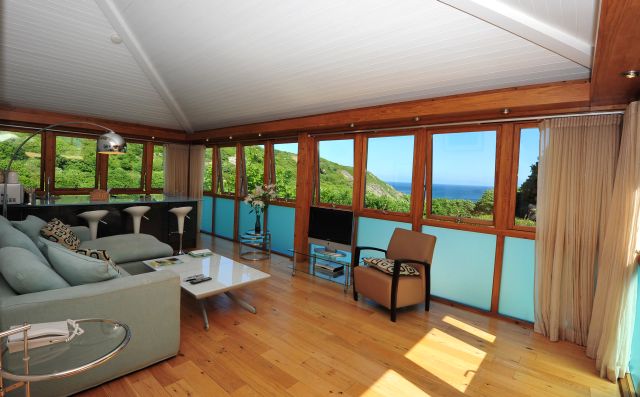
A shadow of its former self, what was once Jory’s Hotel – one time home to Gilbert, A.J and Florence – The Cove has been transformed into 16 luxury self-catering apartments, jutting out from the cliffs, up the hill from Lamorna cove, with transparent walls offering uninterrupted views. A perfect base providing freedom to roam as you please, to research the sights and tastes of the area, without being restricted to breakfast times and the like. Far too much space for this little one to rattle around on her lonesome, mind you, but a luxury all the same, with a stone double headed shower big enough to squeeze the whole of the Lamorna Artists Group into, and an open plan living room, kitchen and dining area made for one of the many raucous soirees they threw. I like to think the film’s cast enjoyed similar gatherings when they stayed here during filming.
With a tight schedule to meet, I devour a pastry and fresh coffee, and head down the winding road to Penzance, to catch the last day of the Summer in February exhibition at Penlee House Gallery and Museum. Having only seen the film by this point, I’m keen to fill in the gaps adaptations inevitably bring and see the work of the protagonists.
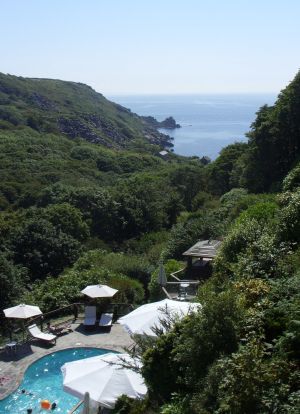 It doesn’t disappointment, bringing the story to life through paintings – including one of the key pieces by A.J Munnings of Florence: The Morning Ride – candid photographs of Alfred, Florence, the Knights, et al, picnicking at Sennen Cove and Trevelloe Wood, and in other social situations where they looked like they were having a jolly good time. Hand painted invites to late night parties and a thank you ‘Sausage Supper’; farewell letter to Gilbert when he left to join the Colonial Service in Nigeria signed by the artists, and an entry from his diary from April 1914, written in minute scribe, summarising a meet with Florence; tragically their last. Munnings’ evocative poetry and vibrant oil paintings, and little pen and wash greeting cards he made for friends, revealed the thoughtful and witty side to this troubled artist, and a taste of what Florence fell in love with. All very poignant, seeing how close-knit and seemingly happy the group were in the tranquility of the area, before tragedy struck, and later, the outbreak of the First World War tore them further apart. Enough to have me picking up a copy of the book from the gift shop to read the full story, a brilliantly written, absorbing tale I later devoured. One I highly recommend.
It doesn’t disappointment, bringing the story to life through paintings – including one of the key pieces by A.J Munnings of Florence: The Morning Ride – candid photographs of Alfred, Florence, the Knights, et al, picnicking at Sennen Cove and Trevelloe Wood, and in other social situations where they looked like they were having a jolly good time. Hand painted invites to late night parties and a thank you ‘Sausage Supper’; farewell letter to Gilbert when he left to join the Colonial Service in Nigeria signed by the artists, and an entry from his diary from April 1914, written in minute scribe, summarising a meet with Florence; tragically their last. Munnings’ evocative poetry and vibrant oil paintings, and little pen and wash greeting cards he made for friends, revealed the thoughtful and witty side to this troubled artist, and a taste of what Florence fell in love with. All very poignant, seeing how close-knit and seemingly happy the group were in the tranquility of the area, before tragedy struck, and later, the outbreak of the First World War tore them further apart. Enough to have me picking up a copy of the book from the gift shop to read the full story, a brilliantly written, absorbing tale I later devoured. One I highly recommend.
Already midday when I finish with the exhibition, the storm has passed, the sky has turned brilliant blue and the temperatures are worthy of the label ‘summer’; it is time to head over to Newlyn School of Art. Like Florence, I too am hoping to hone my creative skills under the expert guidance of one of the local artists. Opened in 2011, the school is aptly located in an old school house, a stone’s throw from the former Forbes School of Painting where Florence studied. Henry Garfit, the artist who founded it and runs it today, shows me around the vast space: bright, airy rooms, which play host to a packed calendar of courses, ranging from landscape painting, life drawing and printmaking, right through to pottery, sculpture and stone carving, taught by a roster of around 30 talented local artists.
One of them, Paul Wadsworth, is my tutor for an afternoon Expressive Painting taster, which, much to my delight, is to be held by the sea, right in the heart of Lamorna cove. As I bid a temporary farewell to Henry, Paul shuffles over from the prime spot he’d been painting all morning and sets me up with a wood-mounted A1 sheet, rested against a big rock he’s collected from the shoreline. Squirting out some punchy hues on to my palette, he prompts me to pick an initial base colour to cover the white space with (I choose yellow), and encourages me to start building on it with layers of expressive and confident brushstrokes, to experiment with different colours, and to avoid trying to directly copy what is in front of me, which is just as well, seeing as my impressionist talents haven’t been tapped into since GCSE art, and were pretty rubbish back then. More surrealist than still life.
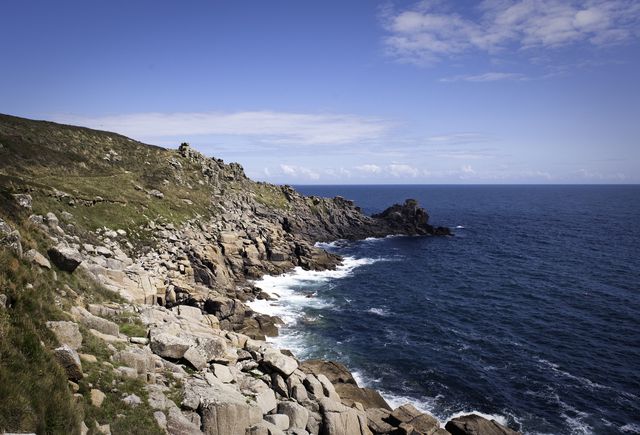
With that being the last time I picked up a paintbrush, bar DIY, I spend the majority of the time not really having a clue where I’m going with it, and a bit embarrassed sitting next to someone who clearly knows his stuff. At the same time, I love every minute. Being in those surroundings, where Munnings et al once hung out, sun at its best, I can completely see why the Lamorna artists and many more, including painter Augustus John, and ‘tramp poet’ W.H Davies, chose Lamorna as their one-time base. There’s a magical energy about the place, heightened by the fairy tale wood, cliff path surroundings and narrow, steep, tree-shrouded lanes leading to it.
Mixing colours, dotting here and there, dramatically swiping across the page as I imagine an artist ‘expressing’ themselves should, hinting at pieces of the landscape but relying very much on the audience’s imagination, it feels free, exciting, a little stressful at times, admittedly, but largely therapeutic. The odd moment when I put down the brush and groan in painter’s block, Paul encourages me to get up, stand back and take in the whole picture. It does look better from afar, as he promises and as most paintings do, and it reveals areas that would benefit with a bit more depth, others that could do with a touch toning down. I’m starting to think like an artist!
“Nothing is ever plain white,” Paul warns, as I return to my seat and swing a loaded brush in the direction of the canvas. “Try mixing it with another colour.”
I pull it back, mix in a bit of red, ending up with something along the lines of sun-bleached salmon, and dot it purposefully in some areas, do my dramatic swipe thing in others.
“Nice pink,” he says.
Great, he likes it! I think.
“Don’t over do it though, otherwise it can dilute the effect and the painting can become a bit flat.”
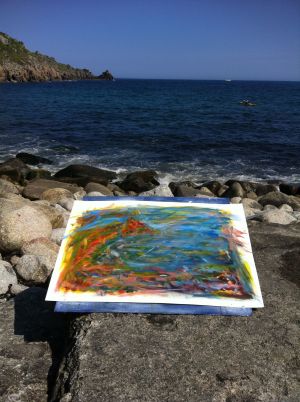 I look over, something I’d been avoiding, so as not to be a subconscious copycat. Paul’s painting has completely changed from how it was when I first sat down; it was good before, but now it is brilliant. Ready to hang. “Not sure I’m cut out for this art malark,” I think to myself, looking back at my own disasterpiece, before pushing unhelpful thoughts aside and adding another smudge of colour here, and a bit there for good measure. After a couple of hours Henry returns, signalling the end of my session and time to start clearing away the brushes, peel my now completely sun-dried painting off the board and roll it up for home.
I look over, something I’d been avoiding, so as not to be a subconscious copycat. Paul’s painting has completely changed from how it was when I first sat down; it was good before, but now it is brilliant. Ready to hang. “Not sure I’m cut out for this art malark,” I think to myself, looking back at my own disasterpiece, before pushing unhelpful thoughts aside and adding another smudge of colour here, and a bit there for good measure. After a couple of hours Henry returns, signalling the end of my session and time to start clearing away the brushes, peel my now completely sun-dried painting off the board and roll it up for home.
Paul’s Expressive Painting course usually runs over three days, my taster was just over two hours long, but still I pick up some useful nuggets to try out in future. And try I will, there’s a blank canvas and box of unopened acrylics winking at me from the bookshelf as I write. The end result, despite going through varying stages of hating it and wondering how on earth I am going to transform it into something a tiny bit decent, is something I actually quite like. Not sure what Munnings would have made of it though, being strongly opposed to ‘modern art’, pieces that don’t resemble the subject: “Let a tree look like a tree.”
Parting ways with Henry back at the school, and fastening the seatbelt in my hire care, I have an urge to drive into town, pop into an art shop, pick up supplies then settle into a comfortable spot on one of the cliff paths above Mousehole to start on another. The experience has given me a thirst for heading back and absorbing myself in a full course. Just for fun. However much I’d love to jack in work, buy a little fisherman’s cottage and spend my days capturing my surroundings in acrylic.
The next morning, I devour the pastries and coffee much slower, wanting to soak up the views a little longer, sad that it’s already time to say farewell to Lamorna. With work beckoning the next day, I begin my journey back home to London, stopping briefly via St Ives en route, for more art at the Tate.
As I walk down the hill from the Pay and Display, the sea comes into view, looking like a postcard from the Caribbean, so many vibrant hues of blue. Just out of peak season, St Ives beach is mostly deserted, bar a small dotting of toddling, sand castle builders, barefoot couples and ice cream lickers. Scenes I take in periodically through the glass wall of the Tate, in between pieces from the Summer 2013 exhibition, which includes another former Lamorna resident Marlow Moss’s constructivist work, and sculptures from Barbara Hepworth. Far from the oil on canvas impressionist works of the Newlyn and Lamorna artists I’d taken in at Penlee House, rather, they tap nicely into the expressionist method I explored with Paul Wadsworth.
After a brief walk around the Barbara Hepworth Museum and Sculpture Garden, a five minute stroll the other side of the town; an ambient spot filled with her magnificent bronze sculptures, through the gaping holes in which sub tropical flora and bright blue birds can be seen, I have just enough time to nip to one of the many gifts shops lining the narrow, cobbled lanes nearby to pick up some obligatory clotted cream shortbread, before it’s time for my short art affair with West Cornwall to end.
A 1952 quote from Hepworth catches my eye as I leave the museum: ‘It was during this time that I discovered the remarkable pagan landscape which lies between St Ives, Penzance and Lands End – a landscape which still has a very deep effect on me…’. The same landscape, I think, that drew Munnings, Florence and the Knights from London and beyond, fuelling their creativity with its granite cliffs, tempestuous seas, never ending beaches and lush fauna; an all encompassing landscape that effects me in the same way, bringing a smile to my face whenever St Michael’s Mount comes into view, and a heaviness to my heart when I leave…
Newlyn School of Art, The Old Board School, Chywoone Hill, Newlyn, Cornwall, TR18 5AN. Tel: +44 (0)1736 365557. Website.
The Cove, Lamorna, Penzance, Cornwall, TR19 6XH. Tel: +44 (0)1736 731441.
Getting there: First Great Western runs direct routes from London Paddington to Penzance. For full timetable and reservations, visit the website. The Pullman fine dining service in partnership with Mitch Tonks is available on routes throughout the day. For more information and booking, click here.


